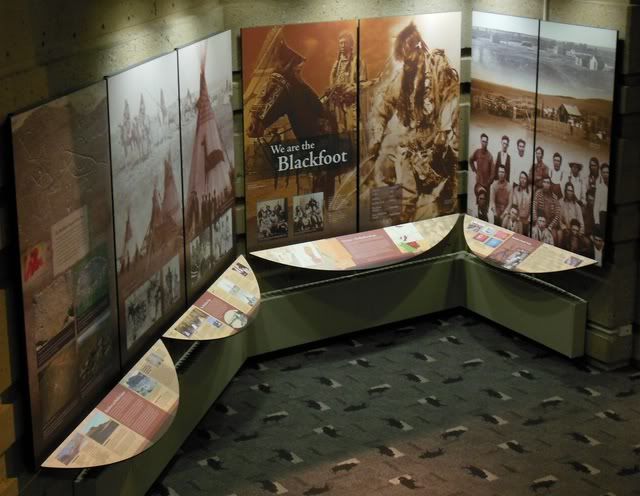
Niitsítapi, the Blackfoot people, have a long and rich history on the Northern Plains. According to tribal elders, the people have always lived on the Plains, since the time when muskrat brought up the mud from under the waters. Archaeologists can trace the Blackfoot through their artifacts and sites for at least a thousand years. Beyond that, archaeologists are reluctant to put a tribal name on the earlier tools and sites. Aboriginal people have lived on the Plains of southern Alberta for at least 11,000 years.
The Blackfoot Confederacy is formed from four closely related First Nations: Siksika (also called Northern Blackfoot), Kainah (also called Blood), South Pikuni (Piegan, located in Montana), and North Pikuni (Peigan, located in Alberta). A fifth group, the Small Robes, was wiped out by a smallpox epidemic in the 1830s. All of these nations share a common language and heritage. Traditionally, they had a way of life centered around buffalo hunting.

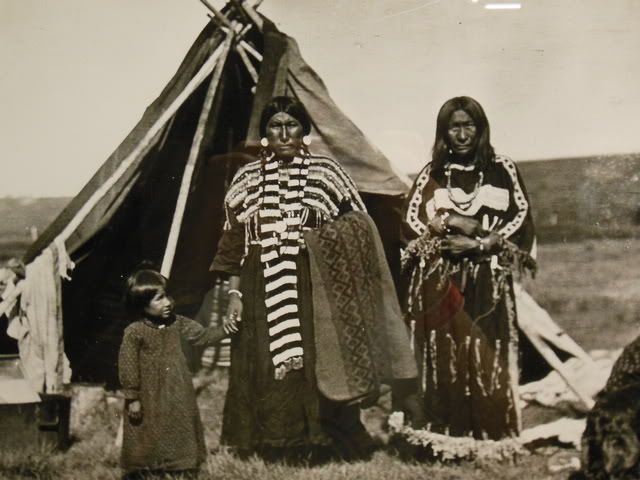
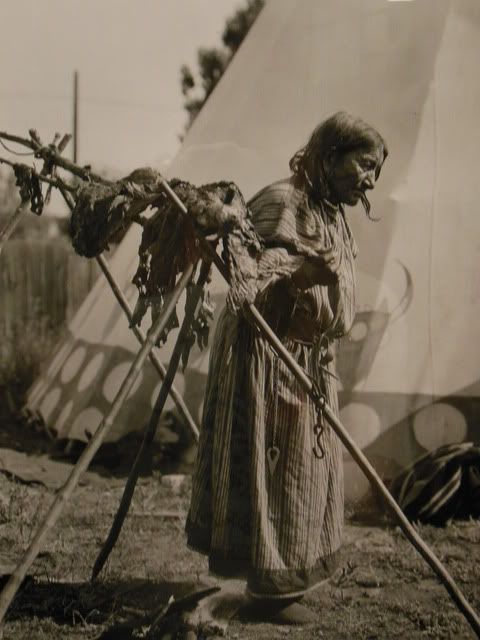
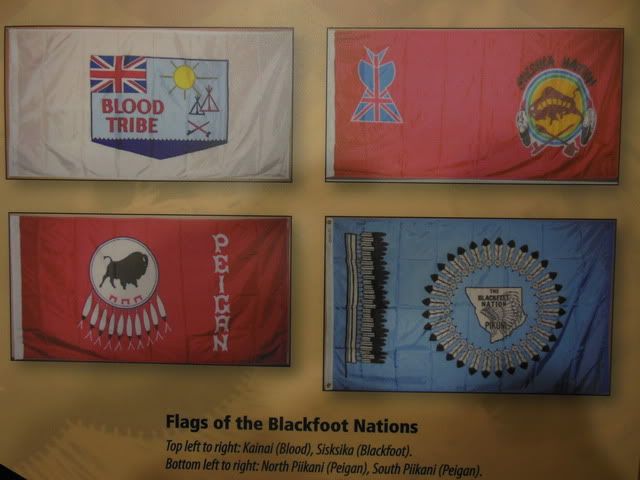
Napi’s People:
On the second level of the Head-Smashed-In Buffalo Jump Interpretive Centre near Fort Macleod, Alberta, are a series of displays entitled Napi’s People which shows the lifestyle of the Plains people. The displays include a reconstructed tipi and artifacts.
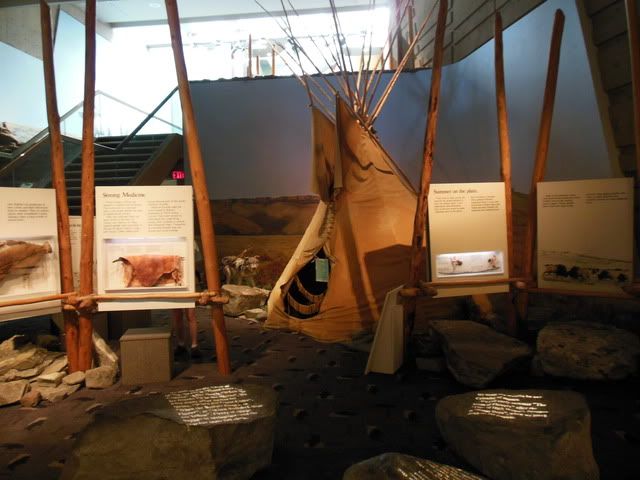
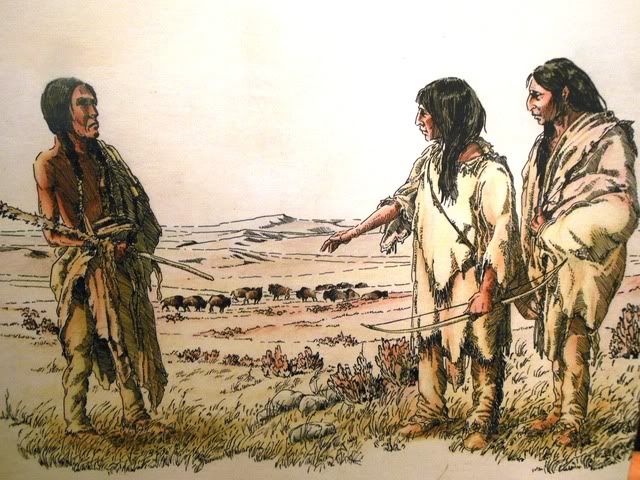
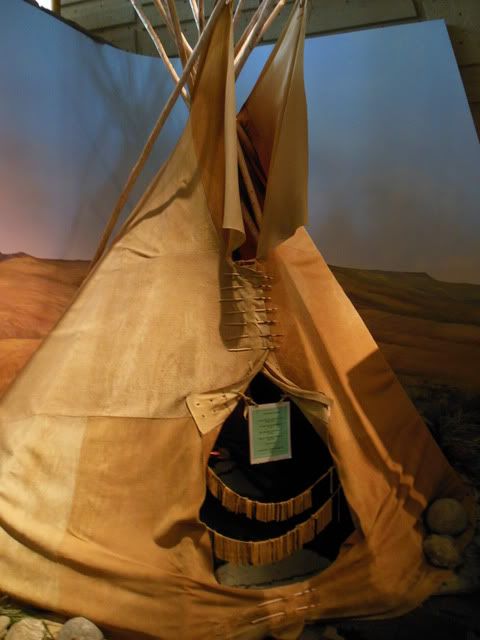
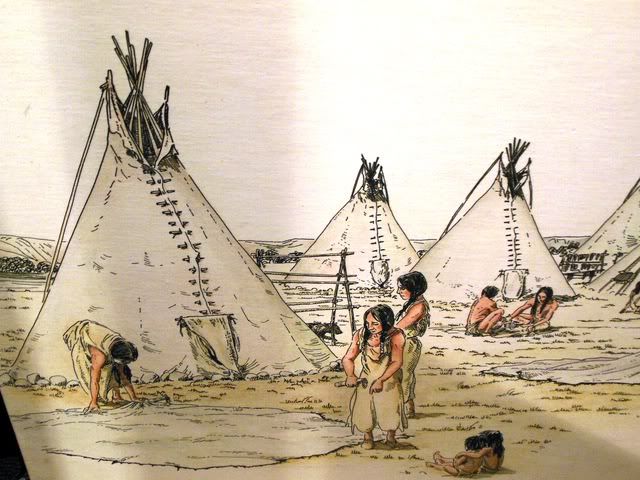
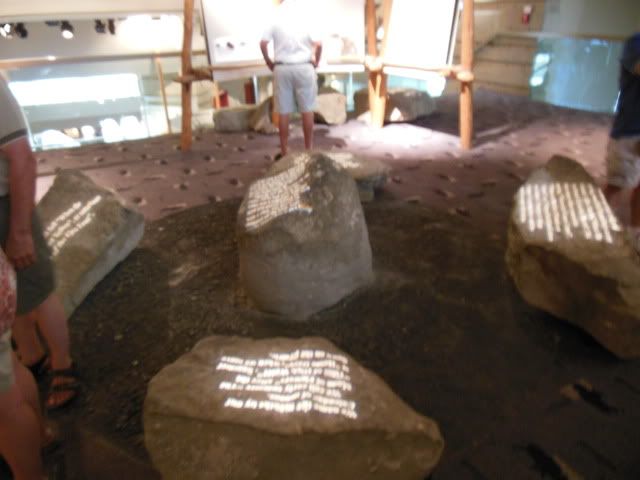
Napi stories are a part of oral tradition. In order to convey the idea of these stories, they are projected onto rocks rather than written out in the displays.
The Blackfoot elders felt that it was important that the visitors to the Head-Smashed-In Interpretive Centre gain some feeling for the spiritual nature of their culture, the buffalo jump, and the importance of buffalo in their life. According to the elders:
Plains Indian culture was steeped in religion and ceremony. The world was an uncertain place, and people needed the help of supernatural powers.
Help was obtained from the spirit world in the form of visions and dreams. In these dreams people were instructed in the use of sacred objects, songs and rituals. These objects and rituals became part of the sacred Medicine Bundles.
Medicine Bundles were the most powerful religious possession in Plains Indian culture. They were owned by individuals but could bring power, luck or health to anyone who honoured them. Ownership of a bundle brought long life, success and social prestige.
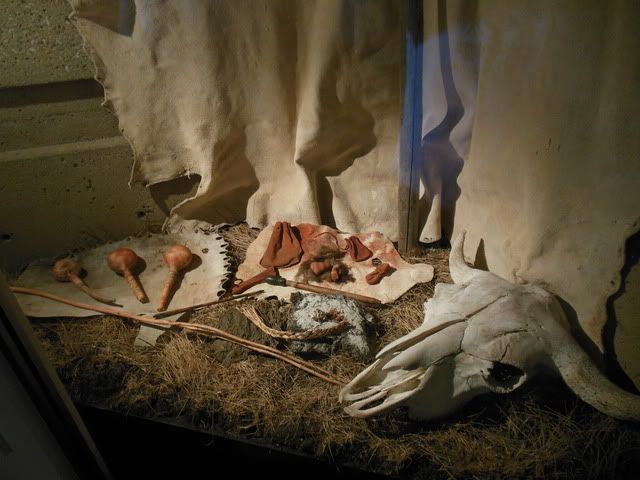
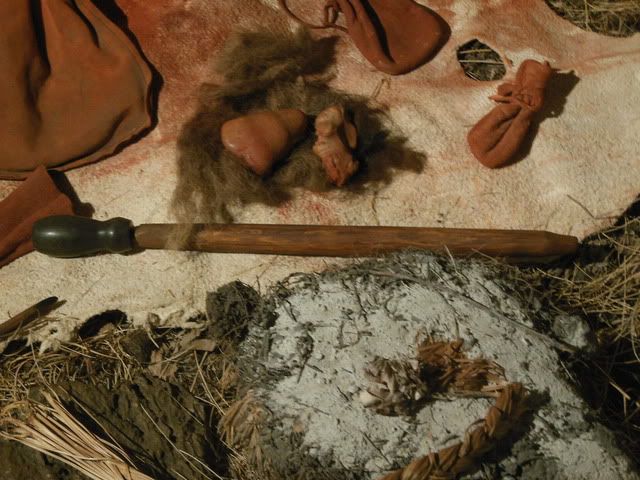
Shown above are replicas of some of the ceremonial items used by the Blackfoot, including rattles, small medicine bags, a pipe, and smudge. Notice that the pipe is not the elbow pipe which is often shown in association with the Plains tribes, but rather is a straight pipe.
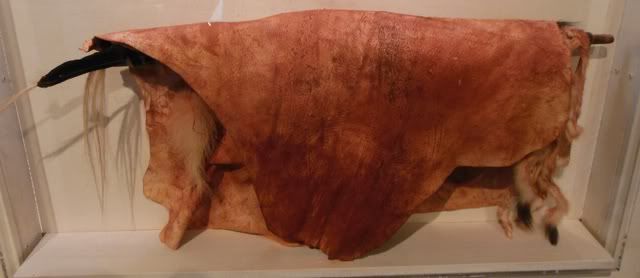
One of the concerns of the Blackfoot elders was how to express the spiritual nature of the buffalo jump without displaying spiritual artifacts. Spiritual artifacts, such as medicine bundles, are not meant to be ogled by tourists. The elders decided that a replica would be created by someone who had the spiritual power to create the actual bundle. The explanation of the medicine bundle shown above:
“There were different kinds of medicine bundles, each symbolizing different kinds of power. The one displayed here is a Medicine Pipe Bundle. It was given to the people by Thunder.
Because of its sacred nature, this Medicine Bundle is a replica. Except for the pipestem, the bundle is empty. A real Medicine Bundle would contain the skins of muskrat, mink, otter, squirrel, owl and other birds, a rattle, a wooden bowl, and several small rawhide bags containing red earth paint, pine needle incense for smudges, and tobacco. The bundle would be opened at least once a year, shortly after the first thunder in the spring.”
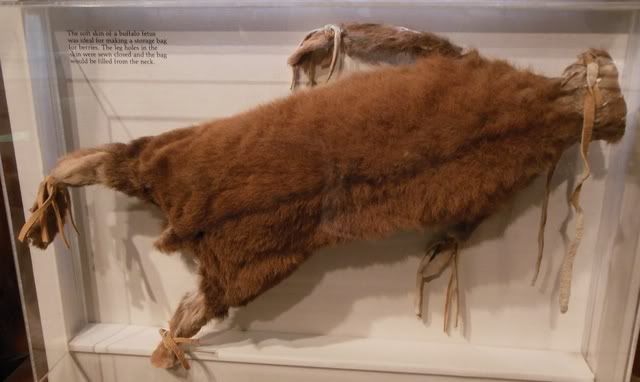
Shown above is the hide of a buffalo fetus which has been made into a bag for holding berries.
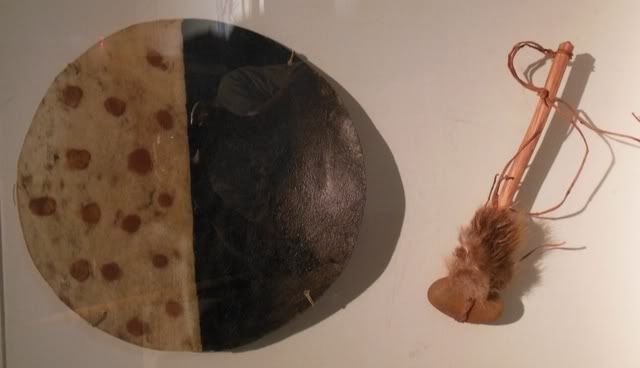
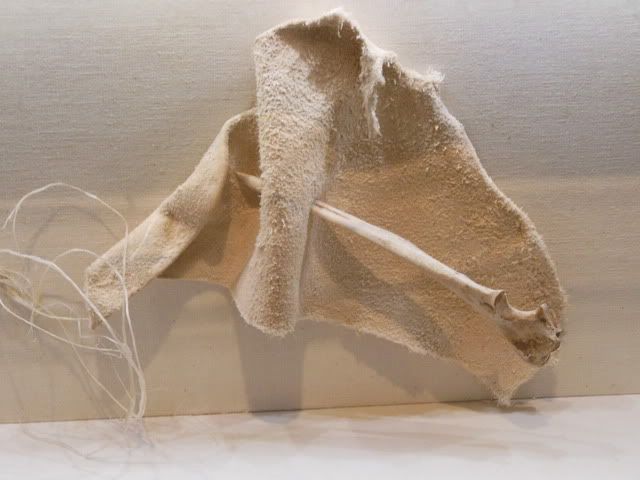
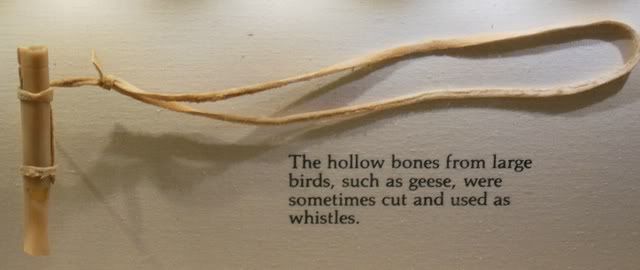


Shown above is the detail of how the hides of the tipi are pinned above the door.
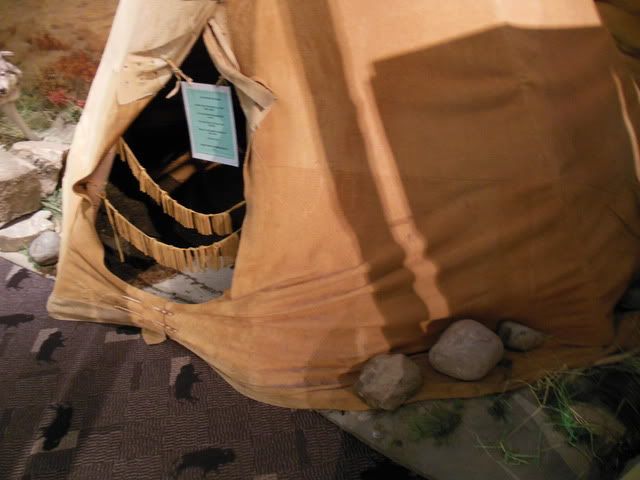
Notice the stones which are being used to hold down the tipi covers. Throughout the Northern Plains, archaeologists have found “tipi rings” of these stones where Indian lodges once stood.
Note: most Indians in North America did not live in tipis: this was a form of architectures which was highly developed on the Plains.
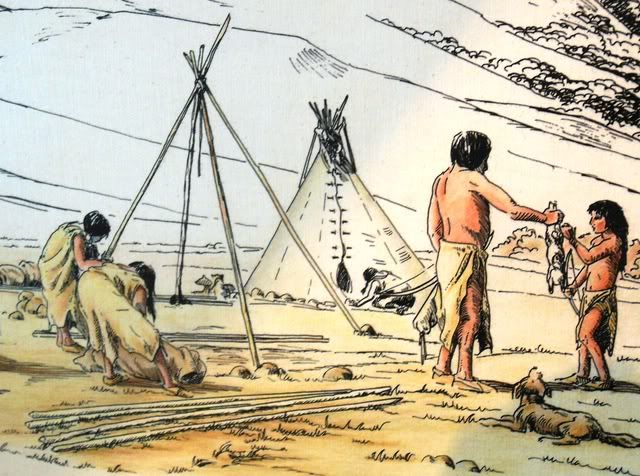
The drawing shown above shows women erecting a tipi in a Blackfoot camp. Notice that they are using a four-pole base frame. Many of the other Plains tribes used a three-pole frame.
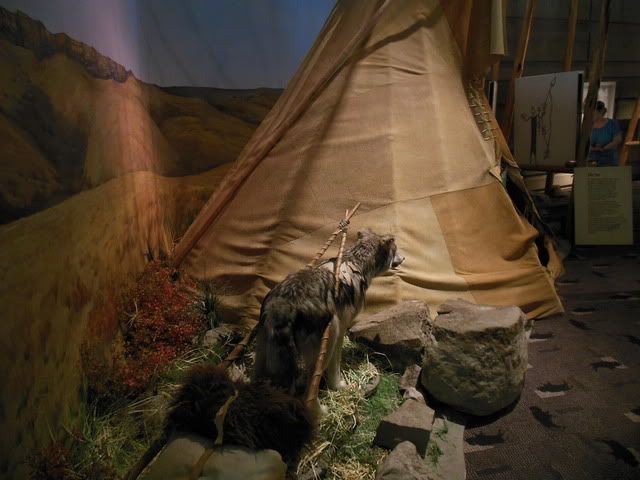
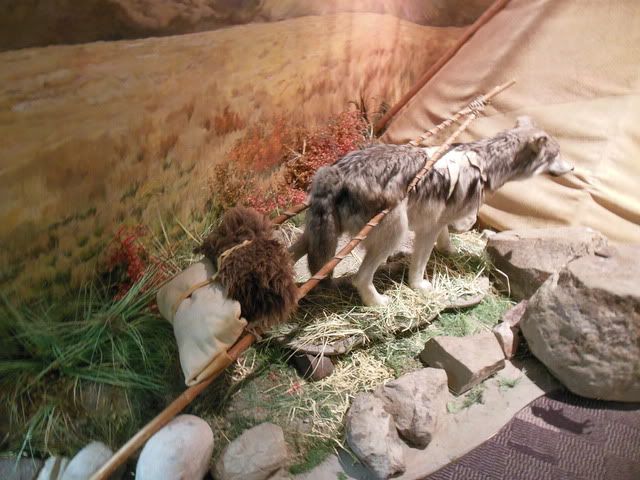
Prior to the acquisition of the horse in 1735, the only domesticated animal used by the Blackfoot was the dog. During the Dog Days, the dogs carried loads in a travois (shown above).
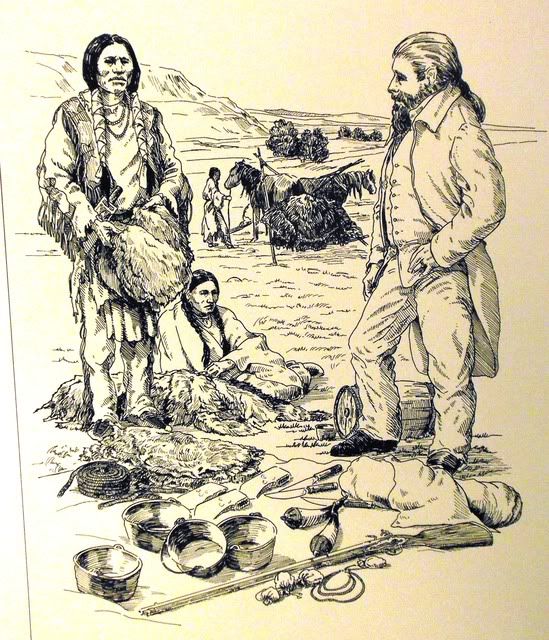
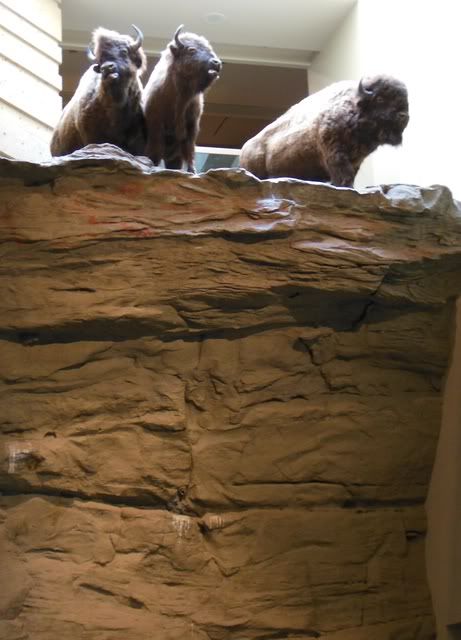


Leave a Reply